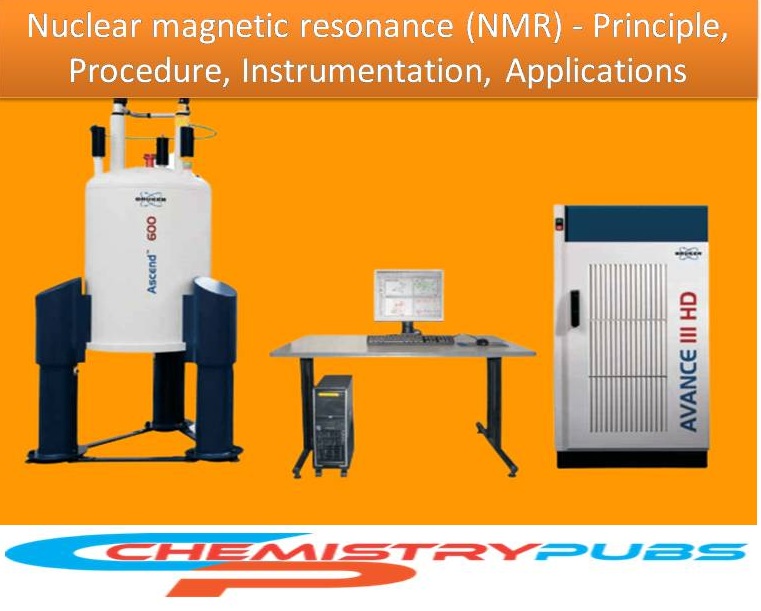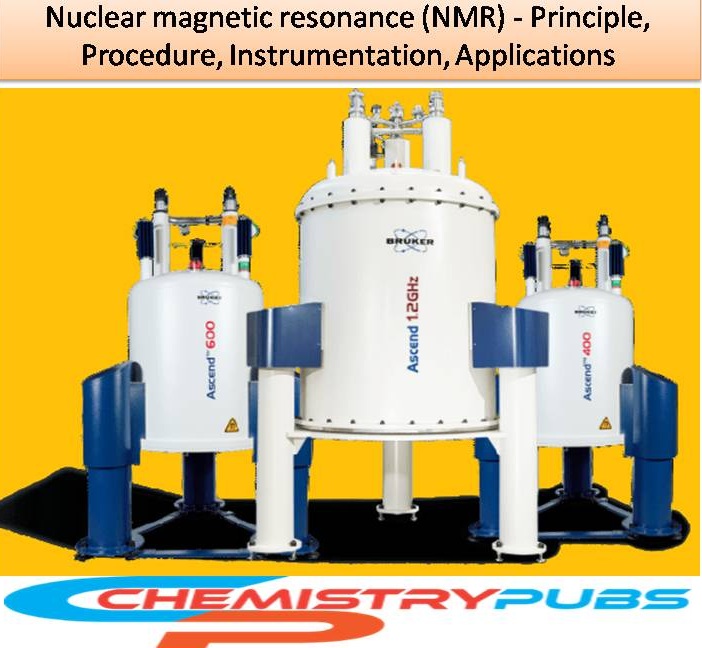NMR spectroscopy is a type of accomplished instrumental analytical technique which is used to know the structural information about molecules. It is generally based on the magnetic resonance phenomenon which was first introduced by Isidor I. Rabi in 1938. Firstly, it was measured successfully in 1940 by two research groups, Felix Bloch and Edward M. Purcell. They were jointly awarded the Nobel Prize in Physics in 1952 for their historical contributions to the field of magnetic resonance.
Since those early days, NMR spectroscopy has the greatest contribution in various fields such as mathematics, physics, and informatics. Now it is a very powerful technique for the structural determination of chemical species, as well as for the discovery of molecular dynamic behavior and interactions.
What is NMR spectroscopy?
NMR spectroscopy is a type of physicochemical analysis technique that basically depends on the interaction of externally applied radiofrequency radiation with atomic nuclei. There is occurred an exchange of energy at the time of interaction which is called nuclear spin.
This spectroscopic technique is based on the absorption of electromagnetic radiation in the radiofrequency region 4 to 900 MHz by atomic nuclei. [1]
NMR Spectroscopy Principle
An electrically charged nucleus is found in every element. The atomic nucleus will generate a magnetic dipole along the axis of the spin if the spins of the neutrons and the protons do not get paired in the nuclei.
The net magnitude of this dipole which is produced is referred to as the nuclear magnetic moment. By knowing the values of symmetry and distribution of the magnetic dipoles, the internal structure of the molecules is determined easily. The Nuclear magnetic resonance spectroscopic principle depends on the spin of the nucleus that can generate the magnetic field.
The spins of the nucleus will be arranged in a random manner if it is not available in an external magnetic field. The nucleus spin gets aligned either with or against the direction of the applied magnetic field after applying the external magnetic field.
The energy differences between the excited state and the ground state are found for the application of the external magnetic field. The energy transfer takes place at the wavelength which is equivalent to the radio frequency level. The emission of radiofrequency gives the NMR signal to the corresponding nucleus when the spin comes back to the initial ground state. The emission of radiofrequency is directly proportional to the magnitude of the applied magnetic field. [2]

Nuclear magnetic resonance Spectroscopy Working Mechanism
For the test of the ample, place the sample in a magnetic field. Then excite the test nuclei sample into nuclear magnetic resonance with the help of radio frequency waves to produce NMR signals. The NMR signals are then detected with sensitive radio receivers. The resonance frequency of atomic nuclei in a molecule is changed by the intramolecular magnetic field which is surrounded by it. The functional groups and their electronic structure is known by this process. This conclusive method provides details of the structure, reaction state, chemical environment, and dynamics of a molecule. [3]
NMR Spectroscopy Instrumentation
The NMR instrument consists of important nine major parts which are discussed below:
Sample holder – This part is made of a glass tube whose length is 8.5 cm and diameter is 0.3 cm.
Magnetic coils – This coil generates a strong magnetic field whenever current flows through it
Permanent magnet – It helps to provide a homogenous magnetic field at 60 – 100 MHZ ranges
Sweep generator – It modifies the magnetic field strength which is already applied.
Radiofrequency transmitter –This transmitter produces strong but short pulses of radio waves.
Radiofrequency receiver – This part of the Nuclear magnetic resonance receives the radio frequencies.
RF detector – It detects unabsorbed radio frequencies.
Recorder – The produced NMR signals are received by the RF detector.
Readout system – A computer that is connected to the Nuclear magnetic resonance instruments that record the data. [4]
The solvent of NMR Spectroscopy
The sample preparation by Nuclear magnetic resonance spectroscopy is a complex step. The three types of samples analyzed in Nuclear magnetic resonance spectroscopy are liquid samples, solid samples, and gas samples. The liquid sample can be analyzed by putting around 0.5-0.6 ml of the liquid in the NMR sample tube. The solid samples must be mixed with the selected solvent for the analysis, usually, 2-3 mg of the sample is mixed with 0.5 ml of the solvent. The selected gas samples are analyzed by dissolving them with the help of a suitable solvent.
The prepared sample for the NMR analysis must be filtered for removing iron particles (if any) and is also degassed for removing the oxygen because both the oxygen and iron are paramagnetic molecules, which may result in the undesired line broadening of the NMR spectra.
NMR spectroscopy produces good signals if the sample is in the liquid form; hence all the samples should be converted into the liquid form to get better NMR spectra. It should be selected a suitable solvent to follow the requirements. The selected solvent should be chemically inert type towards both the sample holder and the sample.
It should be used Carbon disulfide, carbon tetrachloride, deuterium oxide, and Hexadeuteriobenzene for their chemical properties.
What we can learn important information from NMR spectra
Chemical shift: We can learn about the composition of atomic groups within the molecule by this technique.
Spin-Spin coupling constant: We can learn information about adjacent atoms.
Relaxation time: We can learn about molecular dynamics.
Signal intensity: We can learn various quantitative information that is very helpful for determining the molecular structure and proportions of different compounds in a mixture.
Nuclear magnetic resonance Spectroscopy Applications
The nuclear magnetic resonance spectroscopic method is very much used in bio, foods, and chemistry, as well as new fields such as battery films and organic EL, which are improving and developing at the present time because this is an indispensable analysis tool in cutting-edge science and technology fields. This method is very suitable for quantitative analysis in the field of polymer Chemistry, Quality Control of synthetic chemicals, and food chemistry. It is possible to know about molecular mobility, and interatomic distance by helping this technique.
References
1.Wong, K. C. (2014). Review of NMR spectroscopy: basic principles, concepts and applications in chemistry.
2.Harris, R. K. (1986). Nuclear magnetic resonance spectroscopy.
3.Shaw, D. (1984). Fourier transform NMR spectroscopy. 2.

